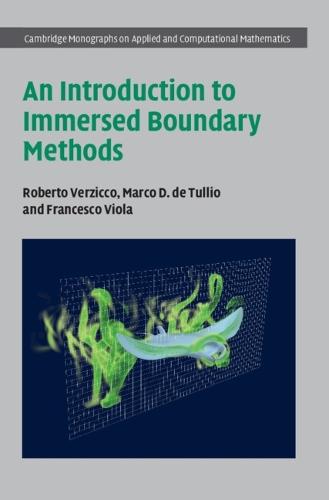Overview
Unlock the potential of computational fluid dynamics with this essential guide for master's and graduate students, and researchers. It explores the immersed boundary method (IBM), a revolutionary approach for simulating flows in complex geometries. With a focus on fluid/structure interaction, it examines theoretical principles and practical implementations, offering insights into tackling intricate geometries and enhancing simulation accuracy. The book features a series of numerical examples that increase in complexity, and is accompanied by the source code, allowing readers to replicate results and deepen their understanding. Whether you're wanting to refine your skills or embark on new research, this introduction will empower you to master the art of complex flow simulations.
Full Product Details
Author: Roberto Verzicco (Università degli Studi di Roma ‘Tor Vergata’, Gran Sasso Science Institute, L’Aquila, and University of Twente, Enschede) ,
Marco D. de Tullio (Politecnico di Bari) ,
Francesco Viola (Gran Sasso Science Institute, L’Aquila)
Publisher: Cambridge University Press
Imprint: Cambridge University Press
Weight: 0.498kg
ISBN: 9781009123204
ISBN 10: 1009123203
Pages: 236
Publication Date: 06 November 2025
Audience:
College/higher education
,
Postgraduate, Research & Scholarly
Format: Hardback
Publisher's Status: Active
Availability: Manufactured on demand

We will order this item for you from a manufactured on demand supplier.
Reviews
'A much-needed reference, this book offers a clear and self-contained overview of the immersed boundary method. Blending theory and practical examples, and via the illustrative accompanying code, it covers all key aspects of the approach, making it an invaluable resource for both experienced researchers and newcomers.' Simone Camarri, University of Pisa 'Immersed boundary methods have become an indispensable tool for modern numerical simulations in fluid dynamics and way beyond, and the number of publications employing them is still exploding. Yet there has been no systematic textbook on immersed boundary methods. The wonderful and deeply thought-through textbook by Verzicco et al. now fills this gap. It is immediately indispensable both for researchers already employing the methods and for novices who want to learn them.' Detlef Lohse, University of Twente
Author Information
Roberto Verzicco is Professor of Fluid Dynamics at Tor Vergata University of Rome, the Gran Sasso Science Institute and the University of Twente. He is an Associate Editor of the 'Journal of Fluid Mechanics' and became Euromech President in 2025. The American Physical Society awarded him the Frenkiel Award (2005) for his studies on natural convection and the Stanley Corrsin Award (2022) for the immersed boundary method and its application to heart flows. Marco D. de Tullio is Professor of Fluid Dynamics at Politecnico di Bari. He has been Visiting Researcher at the Center for Turbulence Research at Stanford University. His research focuses on the development of numerical codes for the simulation of complex multi-physics problems, involving fluid-structure and electrophysiology interaction. Francesco Viola is Professor of Fluid Mechanics at Gran Sasso Science Institute, L'Aquila, working on multi-physics computational models that bridge engineering, physics and medicine. In his research, he combines numerics, experiments and theory to rationalize the physics at play in problems arising in natural and laboratory settings. Viola has applied immersed boundary methods to create a computational model of the whole human heart, which is currently exploited within the ERC-StG CARDIOTRIALS to investigate cardiac pathologies and optimize medical devices.



